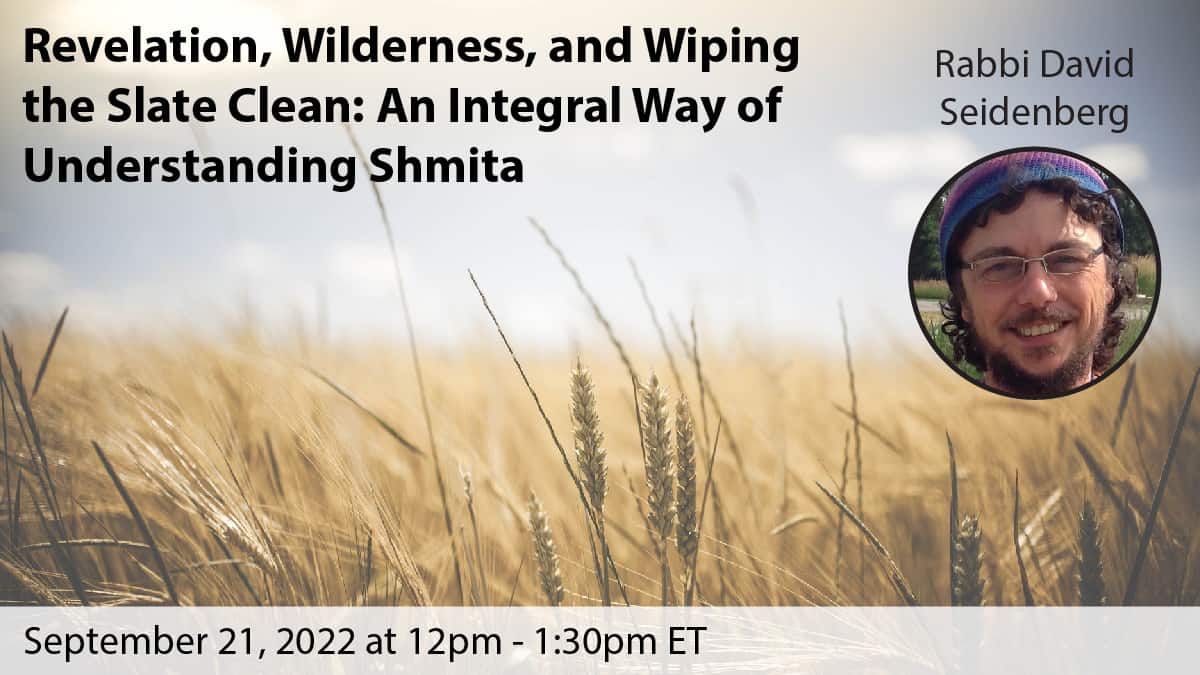Sep 21, 2022 - 12:00 pm EDT - 1:30 pm EDT 

Shmita, the Sabbatical or seventh year of release, brings radical transformation to our relationship with the land, with wild animals, and with each other. It guides us toward an agriculture that looks more like permaculture food forests, and demands that we take down fences that would keep out people or wildlife. Shmita unwinds the toxic idea that we can own the land or take control of it just for our own benefit. The rabbinic understanding of Shmita is that everything from the ground is hefker — ownerless — in the Shmita year. This means that the land becomes like wilderness during Shmita. But the rabbis also taught that the Torah could only be given in the wilderness, because it can only come down in a place that is hefker, and they taught that in order to receive revelation, we need to make ourselves “hefker”. So how does Shmita change our world, and wipe the slate clean, so that we can receive revelation? And what revelations have we received during this Shmita year, the first one ever to be widely acknowledged in the diaspora?
 Rabbi David Seidenberg is the creator of neohasid.org and the author of Kabbalah and Ecology: God’s Image in the More-Than-Human World. He has published widely on Judaism and human rights, animal rights, ethics, and ecology, and is well-known for his liturgy and translations. David is also an avid dancer, composes Jewish and other music, and leads programs on Judaism and astronomy.
Rabbi David Seidenberg is the creator of neohasid.org and the author of Kabbalah and Ecology: God’s Image in the More-Than-Human World. He has published widely on Judaism and human rights, animal rights, ethics, and ecology, and is well-known for his liturgy and translations. David is also an avid dancer, composes Jewish and other music, and leads programs on Judaism and astronomy.




